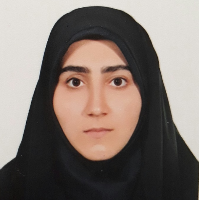Use spatial- temporal Fusion Algorithm to extract vegetation indices in rice growth stagesAbstract
Earth monitoring satellites and vegetation indices are very useful to study the plant greenness at different stages of growth. Widely paddy fields in the north of the Iran has provided the opportunity for research related to rice crops by new technologies, but cloudy sky in plant growth periods leads to remote sensing information in humid areas is less welcomed. The existence of spatial-temporal fusion algorithms has provided the opportunity and rebuilding satellite images in cloudy periods to use remote sensing data in the period of plant growth. In this study, spatial-temporal fusion algorithm were used to rebuilding the images of Landsat 8 and Sentinel 2 satellites during the growing season of rice to estimate the leaf area index as a representative of vegetation health and development at different stages of growth.
To achieve the objectives of this study, images of Landsat 8 and Sentinel 2 satellites were used. In the cloud period, with the help of STARFM algorithm, two satellite images were rebuilt and used to extract Normalized Difference Vegetation Index (NDVI), Rice Growth Vegetation Index (RGVI) and Soil Adjustment Vegetation Index (SAVI).To estimate leaf area index by satellite images, a suitable relationship was obtained between vegetation indices and rice leaf area index at different stages of growth.
Due to the cloudiness in July and the peak of greenery of the rice plant, using the STARFM algorithm to rebuild the images was very efficient. With the help of 15 images in the whole rice growth period (90 days), four linear relationships were established between Normalized Difference Vegetation Index (NDVI), Rice Growth Vegetation Index (RGVI) and Soil Adjustment Vegetation Index (SAVI) for four stages of growth with leaf area index. The highest and lowest correlation coefficients were observed between vegetation indices and leaf area index of 0.96 for NDVI index in transplanting and maturing stage and 0.75 for RGVI index in transplanting stage, respectively. Also, the map of changes in leaf area index for both satellites during the crop growth period showed well the changes in the greenness of rice cover.
In general, it seems that by using satellite data and image rebuilding on cloudy days, it is possible to achieve the leaf area index with high accuracy and extract various information such as age and growth stage for the rice plant
- حق عضویت دریافتی صرف حمایت از نشریات عضو و نگهداری، تکمیل و توسعه مگیران میشود.
- پرداخت حق اشتراک و دانلود مقالات اجازه بازنشر آن در سایر رسانههای چاپی و دیجیتال را به کاربر نمیدهد.


